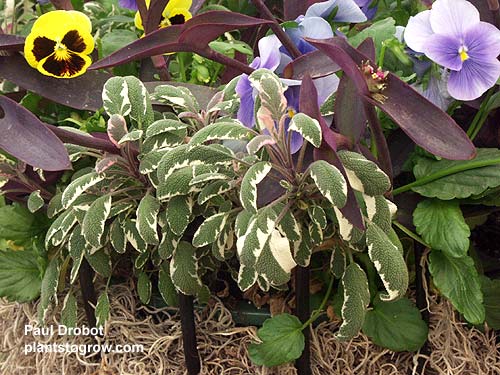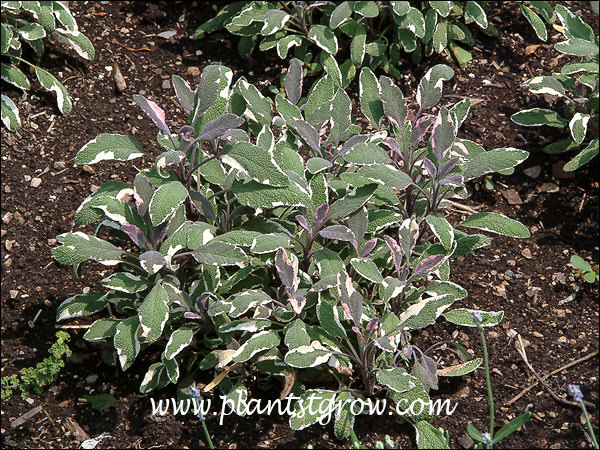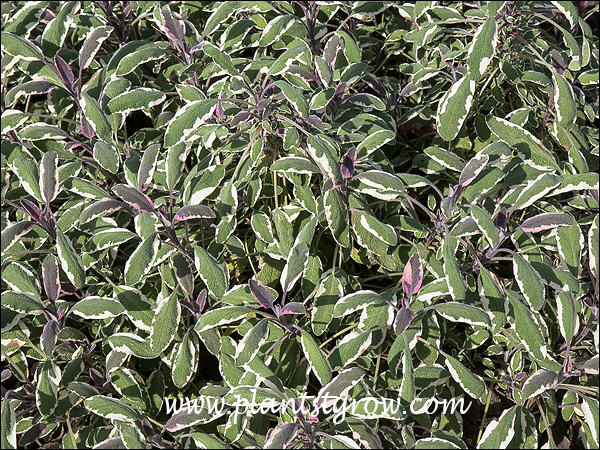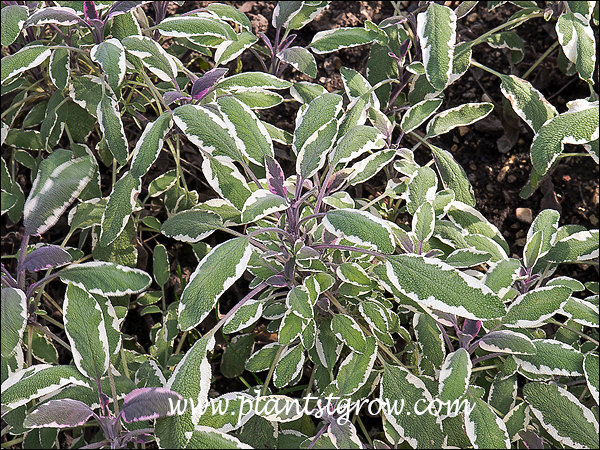| Description | Tri-Colored Salvia (Salvia officinalis) is a multifaceted plant used ornamentally or as a herb. |
|---|---|
| Pronunciation | (SAL-vee-ah)(oh-fiss-ih-NAH-liss) |
| Plant Type | Annuals, Perennial Tender, Site author's observations, Herbs |
| Hardiness Zone | 6-9 |
| Sunlight | full |
| Moisture | approach dryness |
| Soil & Site | Prefers light, well-drained soil and avoids wet soils, which are fatal. |
| Growing Media | Average potting media |
| Temperature | Once established, it seems to tolerate the cooler weather of the fall. |
| Flowers | Two-lipped, tubular, occur opposite on a stalk, white, pink, mauve, blue. Borne on a raceme. |
| Fruit | Schizocarp has four chambers, each with one nutlet. Its papery seed pods contain small, round, brown, or black seeds. |
| Leaves | Simple, oblong, coarse, opposite, green, white, and purple, highly aromatic, dried, and used in teas and for sore throat. |
| Maintenance | A plant purchased in the spring and used out doors will need little work. It will get woody and need to be cut back to rejuvenate the growth. |
| Propagation | tip cuttings |
| Native Site | Native to the Mediterranean region. Found on mountainous slopes and coastlines of the Mediterranean. |
| Misc Facts | The word Salvia is derived from the Latin word salvere "to be in good health". |
| Notes & Reference | #44-The Complete Book of Herbs (Lesley Bremness), #129-Taylor's Guide to Herbs, #274-Site Authors' observations and growing experiences with different types of Salvia officinalis |

Cart




